How to Fix Root Rot (6 Expert Tips)
-
Kristin Hitchcock
- Last updated:
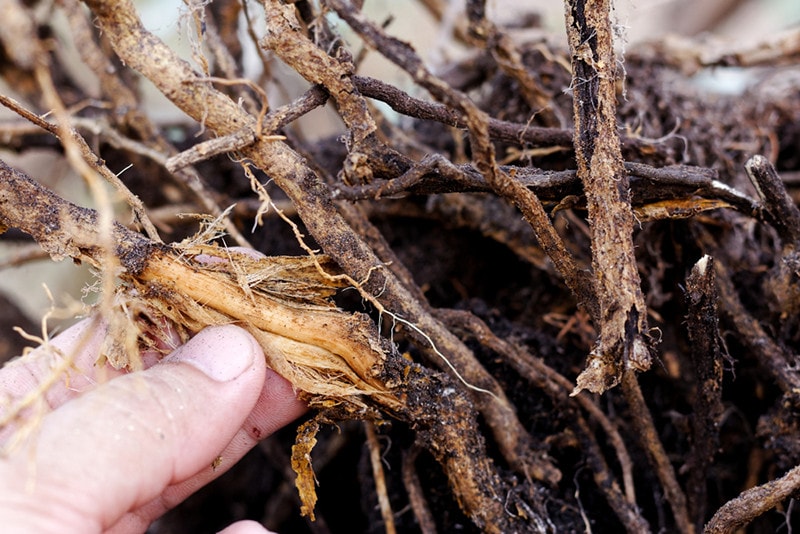
Once root rot has occurred, it cannot be reversed. The roots that have already been affected can’t be mended back to health. Eventually, these roots will break away and decay. However, assuming there are enough roots left, the plant can be supported to grow new roots and further rot prevented.
If your plant has developed root rot, it is very likely because the plant’s soil was too moist. A poorly draining soil will cause this condition in just about any plant. However, some plants require drier soil than others. If their soil isn’t kept dry, then these plants will develop root rot fairly quickly.
There are other causes of root rot, though, such as a lack of oxygen. Dense soil can cause this. Let’s take a look at some of the causes of root rot, as well as how to treat plants that are infected.
Causes of Root Rot
You can’t treat your plant’s root rot if you don’t fix the core cause. Two main issues cause root rot. The first is tied to the soil. If the soil isn’t well-draining enough or too densely packed, the roots will be starved of oxygen. The roots need oxygen to survive, despite the fact that they are underground. Overwatering can also cause the air in the soil to be lost.
Therefore, plants that are overwatered tend to develop root rot. However, it’s the lack of oxygen not necessarily having too much water that causes the root damage.
The second cause is fungal infections. Too much moisture can promote the growth of fungi in the soil. These fungi attack the roots and cause damage. Furthermore, this cause can also spread to other plants easily, and it can even be present in commercial gardening soil.
Luckily, letting the soil dry completely causes most fungi to die off. Therefore, again, watering your plant correctly can prevent this root rot cause.
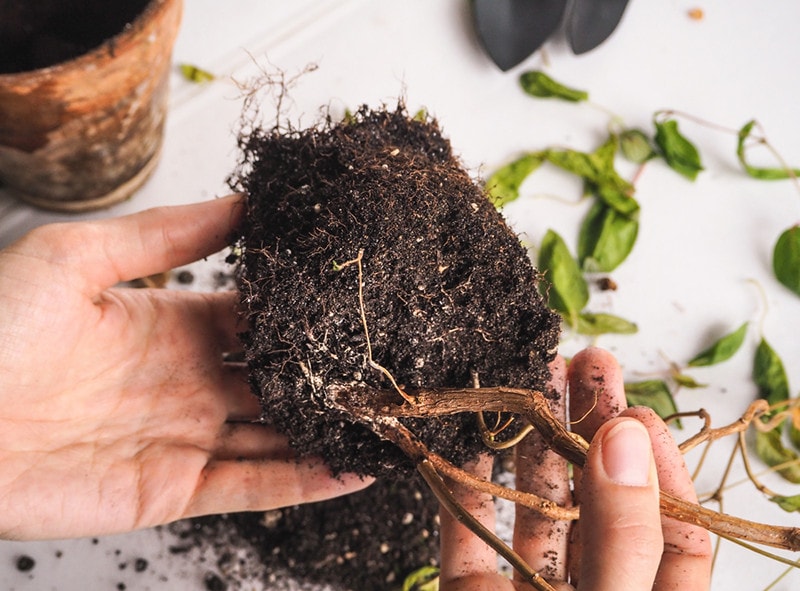
The 6 Tips to Fix Root Rot
1. Identify Root Rot
Before you can start any treatment, it’s important to correctly identify root rot. Plants with root rot will often look simply unwell. They will often wilt and their leaves will yellow. However, these signs can also occur for many different reasons. Therefore, they aren’t enough to diagnose root rot.
As the roots become damaged, they won’t be able to suck up water from the surrounding soil. Therefore, the soil will be wetter for longer. If you notice the soil being wetter for longer, then it may be due to root rot. Plus, even if it isn’t, the soil should not remain soaking for very long. You may need to adjust your watering or soil.
Plants with poor roots won’t grow. If your plant has stopped growing altogether or even died back, then it may be an obvious sign of root rot. However, again, this can also be caused by a range of other reasons. Therefore, we highly recommend checking the roots themselves, too.
If you suspect root rot, a quick look at the roots will confirm your suspicion. Mushy, black roots indicate root rot. Healthy roots are lighter in color, often to the point of being white. Roots with root rot may also smell bad.
2. Clean the Roots
After inspecting the roots, it’s time to clean them. You should remove as much of the dirt around the roots as possible. Use running water to do this. Don’t be too aggressive, as you don’t want to harm any of the healthy roots remaining.
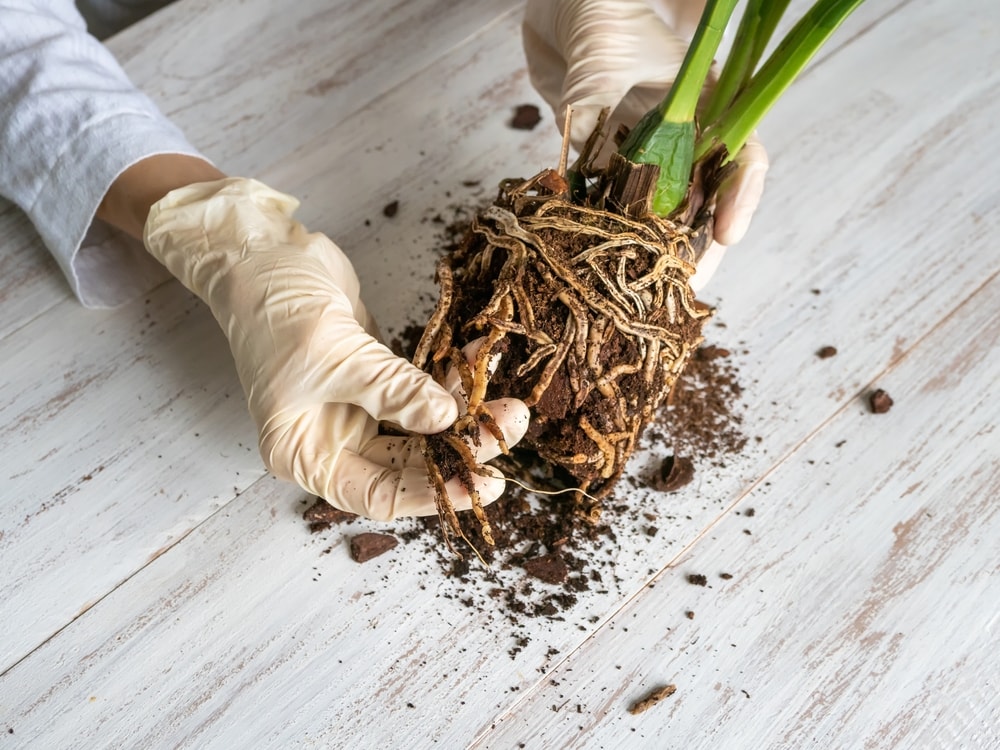
3. Remove the Affected Roots
Next, we recommend removing the affected roots. Root rot can spread if you leave it on the roots. Therefore, it’s important to remove as much of the affected part of the roots as possible. If you are left with very few roots after pruning, cut away some of the plant’s leaves and stems on top, too. This reduces the amount of growth the roots have to support, which can improve the plant’s chance of surviving.
4. Throw Out the Soil
You’ll need to remove all of the soil from the pot if your plant is potted. The soil could be infected with fungus, which will only continue to cause root rot. We highly recommend adjusting the soil to a well-draining option, as well. If the plant developed root rot, it was likely because of inappropriate soil.
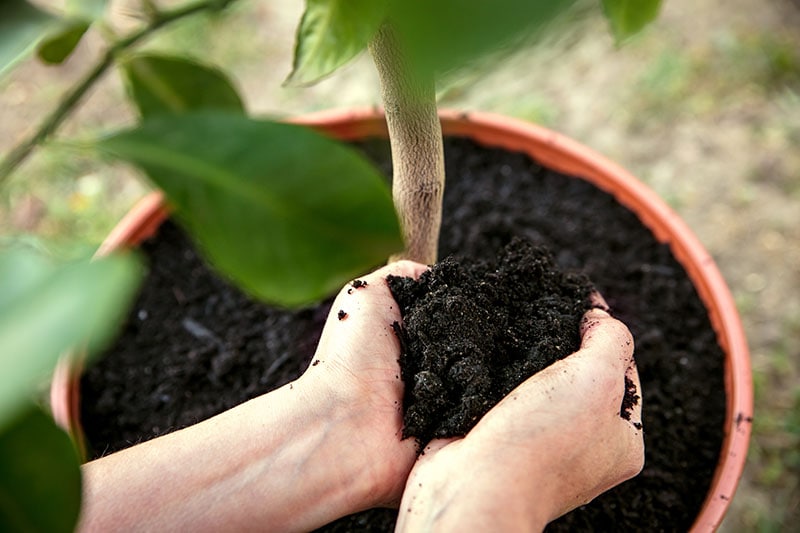
5. Wash the Pot
Now, wash the pot the plant was in thoroughly, as well as your equipment. You want to remove any of the fungal spores if there are any. You can use rubbing alcohol or a solution of water and bleach. If you decide to use bleach, be sure to water it down thoroughly. You should wash all your equipment before handling any other plants.
If you have other indoor plants, be sure to check them for root rot, too. Often, fungal infections spread pretty easily from plant to plant. If one plant has it, others may. Now would be a good time to treat them for root rot, as well.
6. Repot the Plant
Once everything is clean, you can repot the plant. Use fresh soil that’s well-draining and appropriate for your plant. Use a potting mix designed for indoor plants (or whatever plant you’re repotting). Be gentle when repotting, as your plant’s roots are already damaged.
Usually, you’ll need to use a new type of soil. Root rot is often connected to overwatering or the wrong soil. Therefore, the soil usually needs to be changed.
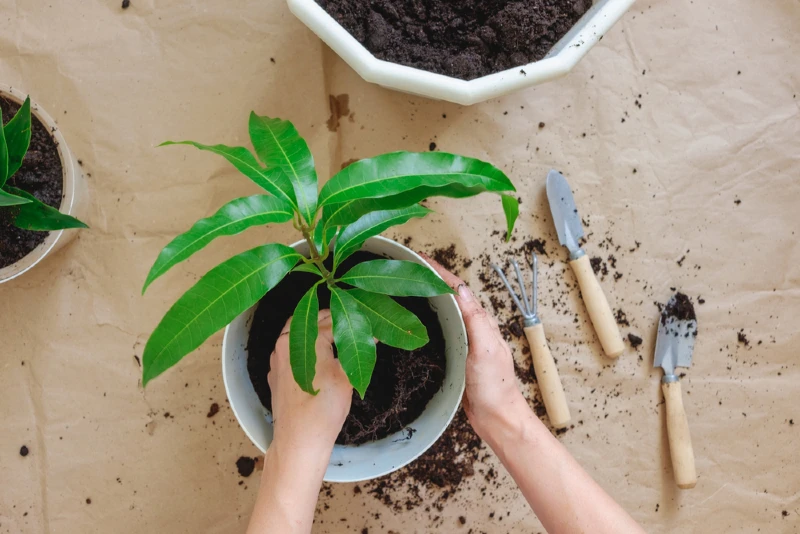
 Conclusion
Conclusion
Root rot is a serious problem that can easily kill plants if left unchecked. Therefore, it’s very important to treat your plant quickly and efficiently for root rot if you notice the symptoms. Often, a plant can be saved if the root rot is noticed early enough and treated efficiently.
Featured Image Credit: Kritchai7752, Shutterstock
Contents
